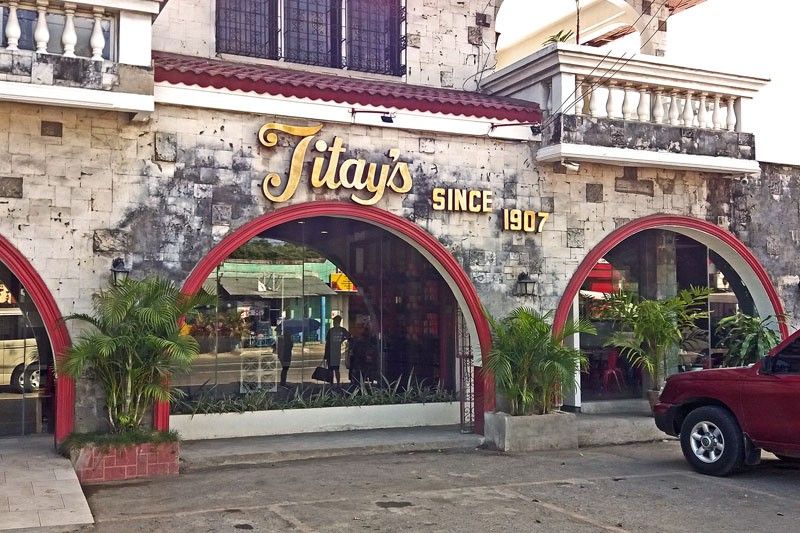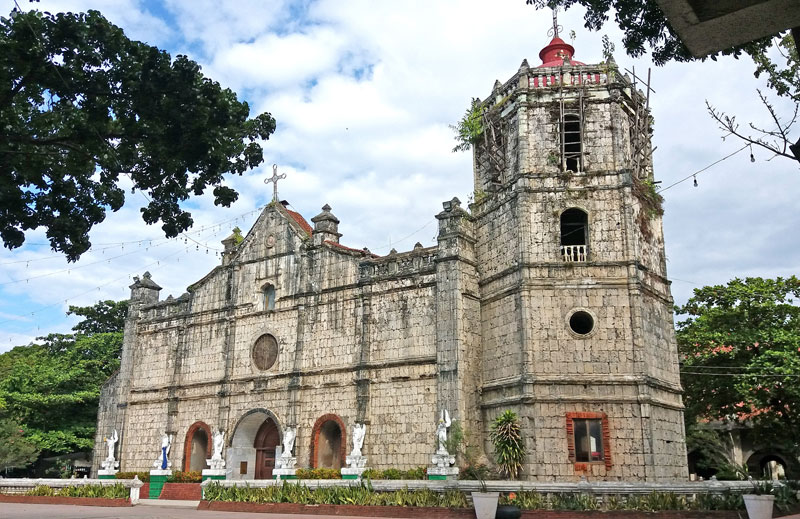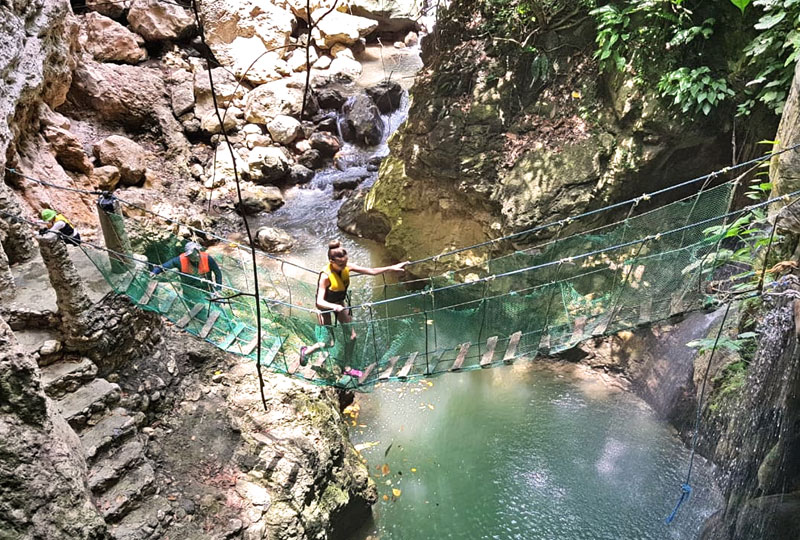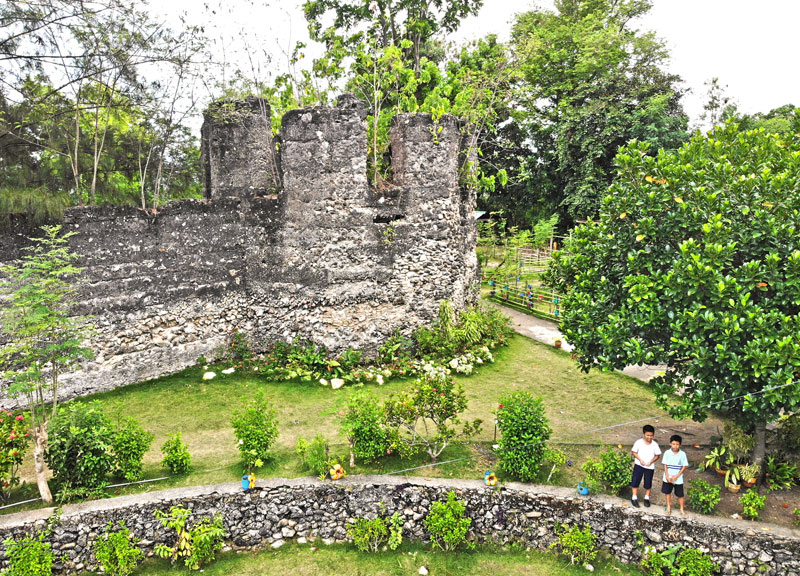Beyond diving: The towns of northern Cebu


In my last column, we looked at the first part of a group tour of northwestern Cebu. My wife Twink had organized our traveling club’s visit to the Visayan island and our base was a vacation villa in Compostela, then we spent our extended weekend hopping north, to the towns of Carmen and Catmon.
While the group was enjoying a trek to a waterfall at Esoy Spring, I went to visit Catmon’s church, as well as a Spanish-era watchtower nearby. But first a bit of history.
The towns of Catmon and Carmen emerged as spinoffs from the larger town of Danao in the early 19th century. The parish of Catmon was established by an Agustinian priest, Father Miguel de Jesus in 1835. He helped set up the town and built a watchtower to guard against pirates from the south. The watchtower was eventually called Bantayan sa Hari.
 Danao hosts one of the oldest church complexes in the country.
Danao hosts one of the oldest church complexes in the country.Padre Miguel built the church originally near the watchtower but moved it because the land around it was too arid to grow anything. Catmon’s church was eventually completed atop a small hill overlooking the Camotes Sea with the poblacion built around it. The church of San Guillermo took a few decades to complete. It stands solid today, despite a number of devastating typhoons over the years. I do have a connection with Catmon’s church — my uncle was the parish priest there in the 1970s.
The church is made from coral stone and keeps its original footprint. As was the practice in many towns, a canopy was added in the 1960s to the original façade. This was to accommodate cars. They did the same thing to the Carmen and Compostela churches, but Danao’s kept its original façade intact.
From the church I paid a visit to the town’s municipal hall, a refined post-war structure that is relatively intact. The structure sits at the bottom of the hill that hosts the church. They don’t make civic structures like this anymore but the busy highway in front deprives it of a forecourt or real plaza.
 Cebu’s inland hills hide numerous treks, waterfalls and caves.
Cebu’s inland hills hide numerous treks, waterfalls and caves.While we are losing a lot of the Spanish-era watchtowers in Cebu and neighboring islands, Catmon’s is relatively intact. I did have difficulty finding it, since it was hidden inside a school compound. It was fascinating to find the tower still standing but vegetation is slowly taking over and I am afraid that the tower’s walls may eventually give way to aggressive roots.
From the watchtower I motored farther north to meet up with the group for lunch. Our venue of choice was Borussia German Restaurant, just across the border to the next town of Sogod. The restaurant serves authentic German food, breads and pastries. We met the friendly German proprietor Jurgen, who is married to Cheche, a Cebuana. Both moved back to Cebu 14 years ago. The food and ambiance was wunderbar! We ordered different sausages, schnitzel, as well as really good pizza. Dessert was yummy apple strudel.
We discovered a number of other attractions in two more towns in between the three Cs mentioned. These were in the city of Danao and the town of Liloan, which sits at the fringe of Metro Cebu. Titay’s on the National Road between Liloan and Compostela is a must visit for rosquillos and other pasalubongs, especially before returning to Manila.
 The Catmon watchtower provided a lookout for pirates in the Spanish colonial era.
The Catmon watchtower provided a lookout for pirates in the Spanish colonial era.The churches and plazas of Liloan and Danao are of historic note. Danao’s Santo Tomas de Villanueva was built in 1755, and is one of the oldest churches in the country. The structure has been well maintained. Surrounding it are three parks and a modern civic center, which augur well for this city as it expands.
Aside from the Cebu Safari and Adventure Park in Carmen, there is the Durano Eco-Farm and Spring Resort nearby. These towns and city (Danao) also host a number of mountain treks, waterfalls and caves. In Danao there is the Danasan Eco Adventure Park.
Most tourists bypass these towns to reach Bantayan at the northernmost tip of Cebu, known for its world-class dive spots. However, there is more to northern Cebu than just diving. Next time you find time to visit the island, look at possible day trips beyond the traffic of Cebu City.
Clearly, all six places, from Liloan to Sogod, could do with a better tourism master plan. Accommodations are lacking, except for a number of vacation villas. Aside from the villa we rented in Compostela, I would recommend Catmon Ripples in Catmon near the Borussia restaurant, which is popular for weekend stays and wedding receptions. The nearest resort is The Alegre in Sogod, but this has been closed for redevelopment.
On a final note, design standards for attractions, except for the Cebu Safari, need to be enhanced if these destinations are to attract more than the local domestic market. Bali in Indonesia went through the same learning curve, but look at where they are now. Cebu province, more than just Mactan, has great potential. It would be interesting to see how tourism develops here in the next few years.
* * *
Feedback is welcome. Please email the writer at paulo.alcazaren@gmail.com.















